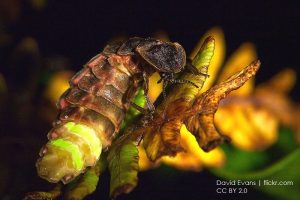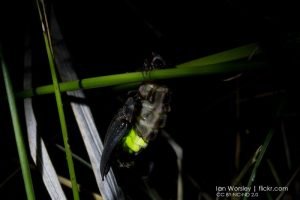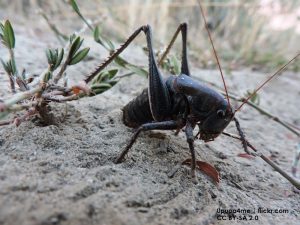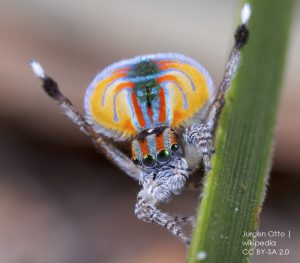We may find out how love and death are very close to each other by learning the details of remarkable intimate life of insects. It is not only their organisms, but also the courtship, mating rituals and sexual behaviours that are characterised by extraordinary diversity. The hardship of ensuring species continuity goes on, and if one or another individual sacrificed their life for this purpose… Well, such are the laws of nature. We asked Dr. Jacek Francikowski, a biologist specialising in neurobiology, evolution and development of insects, to tell us about these laws.
To show you how interesting behaviours in the world of insects are, let’s have a look at three representatives of arthropods: glow-worm, field cricket and jumping spider.
In the world of animals it is usually the male that sends specific information to lure the female: there are only few examples of reverse situations. We can see it, for example, in the external appearance, which is characteristic for particular genders. The diversity of colours and beautiful patterns frequently become a distinctive feature of males, whereas females are definitely less spectacular.

For example, female fireflies (a group of beetles) are inconspicuous and actually do not resemble adult individuals that are typical for beetles at all. They look as if their development stopped at a certain point and they resemble larvae. They usually do not fly, but sit on trees or bushes and send out weak light that cannot be seen by a human eye.

Glow-worm females are winged, fly above the ground, emitting a stronger yellow light thanks to the properly shaped organs located on their abdomen. It’s worth adding that the light signals are different, depending on the species. When a female notices a flying insect and recognises the signal, it responds in the same way.
However, there are certain predatory species of glow-worms among them that can emit light characteristic for another species. Consequently, the male attracted by the visual stimulus and expecting a response from the potential partner simply… gets devoured.
The rich variety of signals is also evidenced by the communication between crickets. Where in the case of glow-worms we talked about light stimuli, it is the aural stimuli that play a dominant role in crickets. Males make characteristic sounds when fighting one another for a territory or a place in the hierarchy, but when they want to attract a female, they sound differently. What is more, this sound also provides information about the cricket’s status – its reproductive capacity, size, and health condition.

As an interesting fact I can also give the example of Anabrus simplex – a species of grasshopper which is related to crickets. In this case, it’s the female that must court the male. During copulation males transfer not only sperm, but also spermatophylax – a nutrient substance which is eaten by the female. Males of this species produce only one spermatophylax in their lifetime, which is why they select their partners carefully – in this case the heavier, the better.

The life and reproduction of jumping spiders is also interesting. Females of these spiders (e.g. peacock jumping spider) perform one of the most complex mating dances I have ever seen! They are extremely quick at what they show, move their legs rapidly to a specific rhythm, and the acrobatic feats performed on this occasion look outstanding. It is also worth noting their beautifully coloured abdomens. It’s very complex information in the world of spiders, which are loners on a daily basis. The male and female get closer to each other only during the breeding period. Unfortunately, this short adventure usually ends with the death of the male.







